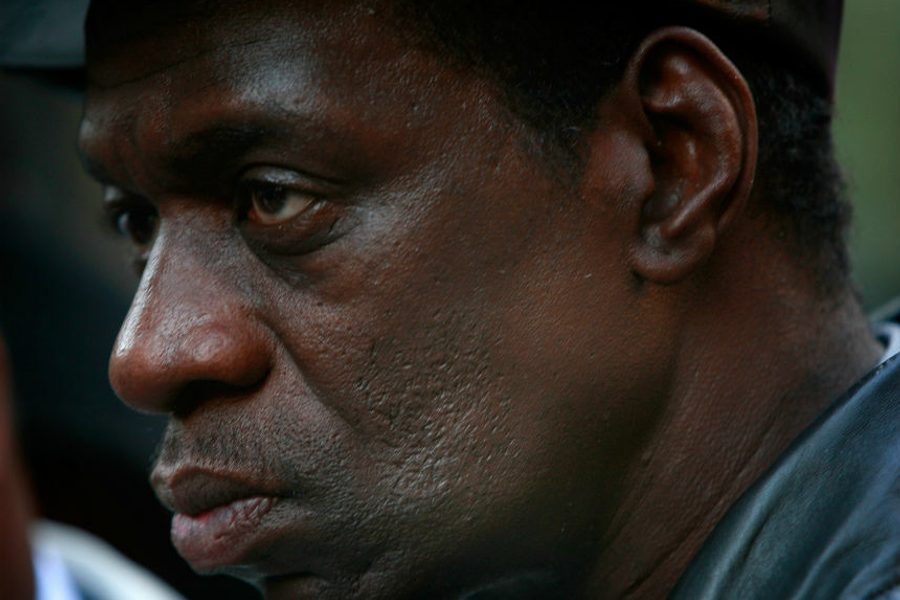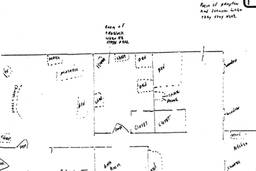Federal Appeals Court Rejects Torture Survivor’s Case
Darrell Cannon was unjustly imprisoned for more than two decades, yet received just $1,247 in compensation.
G. Flint Taylor

As declared by the United Nations in 1997, June 26 is International Day in Support of Victims of Torture. Unfortunately, the U.S. Court of Appeals may have set an alarming precedent for torture survivors around the country with its decision against victim Darrell Cannon late last month.
On May 27, the court shocked Cannon and his supporters by opting to deny him full compensation for the brutal treatment he incurred at the hands of the Chicago Police Department starting in 1983. Led by the notorious Commander Jon Burge, who was fired from his position in 1993 and convicted of perjury in 2010, the Chicago Police victimized at least 120 African-American suspects over the course of two decades, including Cannon, who was tortured before being imprisoned unjustly for 24 years. Despite a number of other survivors receiving millions of dollars from the city of Chicago, Cannon was left with almost nothing — suggesting that the U.S. legal system is all too willing to abandon survivors behind a smokescreen of denial and victim-blaming.
Cannon’s lawyers argued his case in front of the three-judge federal appeals court in January of 2013. (Full disclosure: the author represented Cannon in the U.S. Court of Appeals.) After sympathizing with Cannon’s situation at oral arguments, the court withheld its decision for 16 months. Then, in a stunning reversal of form, it rejected his appeal in a lengthy opinion written by the very judge who had most strongly backed Cannon’s position during the arguments.
Cannon’s criminal case
Darrell Cannon’s 31-year quest for justice began in November 1983, when he was arrested for the murder of a drug dealer by a contingent of midnight-shift detectives who worked for Jon Burge. They allegedly dragged him to a police car, where Cannon says Detective Peter Dignan told him that they had a “scientific way of questioning n*ggers.” When Cannon refused to talk, he says Sergeant John Byrne, who was Burge’s self-admitted “right hand man,” and Dignan took him to a remote site on the far southeast side of Chicago, where they enacted a mock execution. After pretending to put a shell in his shotgun, Cannon recounts that Dignan forced the barrel of the gun into his mouth and pulled the trigger. Dignan allegedly repeated this action two more times. On the third, Cannon says he believed that the back of his head had been blown off.
When Cannon still refused to confess to the murder, he says, Byrne and Dignan threw him into the backseat of their car, pulled down his pants, and repeatedly shocked him on the genitals with a cattle prod. Racked with pain, Cannon agreed to cooperate; after the torture stopped, he withdrew his agreement. Cannon alleges that Byrne and Dignan then administered another round of electric shocks, this time shoving the cattle prod into his mouth. Cannon then relented and gave a false confession that implicated himself in the murder.
During his trial in 1984, Cannon moved to suppress his confession because it was given under torture, but the motion was denied by Cook County Circuit Judge Thomas Maloney. (Maloney would later go to federal prison for taking bribes.) Later that year, Cannon was convicted, but his conviction was reversed on appeal, due to racial discrimination during jury selection. Cannon was then held in prison for a decade on murder charges; finally, in 1994, he was re-tried, only to be re-convicted after Maloney’s successor, John Morrissey, denied him the right to introduce newly uncovered evidence that included 28 cases of Chicago Police torture, including 16 in which Byrne and Dignan were accused of abusing other African-American suspects. On appeal in 1997, the Illinois Appellate Court ordered the trial court to conduct a new hearing on Cannon’s motion to suppress his confession, at which time he could introduce the newly uncovered torture evidence. In doing so, the Court strongly condemned the prosecutors’ arguments, saying, “In a civilized society, torture by police officers is an unacceptable means of obtaining confessions from suspects.”
Back in Cook County Criminal Court, Cannon’s lawyers presented evidence of other acts of torture by Byrne and Dignan. They also produced a 1990 Chicago Police Department Report that officially found that there was “systematic” torture and abuse under Burge. The same report noted that Byrne and Dignan were “players” in Burge’s pattern and practice of barbaric cruelty. Cannon’s lawyers also offered a previously suppressed 1994 CPD report that specifically found Cannon had been tortured by Byrne and Dignan, as well as expert psychological evidence that further corroborated Cannon’s claims of torture.
In 2004, the prosecution dismissed Cannon’s case altogether, likely on the unstated grounds that Cannon’s confession had indeed been made under torture. However, the Illinois Prisoner Review Board refused to release him because of a parole hold from a prior conviction. Finally, in 2007, after two parole hearings and an order from a Cook County Judge, Cannon was released from prison after serving 24 years — nine of which he served in Tamms supermax prison.
Cannon’s civil case
After his criminal case was dismissed in 2004, Cannon filed a torture and wrongful conviction lawsuit in federal court. But he faced a significant hurdle. In 1986, while in a rural southern Illinois prison, Cannon had filed a handwritten damages complaint alleging that he was tortured by Byrne and Dignan. In response two years later, the city of Chicago offered him a nuisance value settlement amounting to $3,000. Cannon’s court-appointed attorney — a general practice lawyer who had never worked on a civil rights case, let alone one about torture — advised him to take the deal. Cannon received $1,247 of his settlement; his lawyer took the rest. And as part of the deal, he signed a broadly worded release that included all claims related to his torture that might arise in the future.
When Cannon filed his second damages suit after being released from prison, the city and police defendants attempted to dismiss it. They argued that Cannon’s paltry 1988 settlement agreement prevented him from seeking more compensation against city officials on all of his claims. Meanwhile, starting in 1989, evidence began to surface that the city of Chicago had engaged in a widespread campaign throughout the last decade to conceal Burge’s sadistic practices. In 2006, Judge Amy St. Eve held that this cover-up constituted a fraud by the police defendants and the city — thereby nullifying Cannon’s 1988 settlement. In other words, had Chicago not engaged in concealing the reign of torture by Burge and his cronies, Cannon might have found it much easier to argue that he, too, had been included in the string of victims, and to demand more compensation as a result.
In July 2007, the Chicago City Council held hearings on the Burge torture scandal. There, several Council members, along with U.S. Member of Congress Danny Davis, publicly urged Mayor Richard M. Daley to settle all of the outstanding torture cases, including Cannon’s. Within months, the city had settled four of the five cases for a total of $19.8 million — and offered Cannon nothing. Instead of settling, the city poured extensive legal fees into further contesting Cannon’s case.
Then, in 2011, Judge St. Eve reversed her prior ruling. This time, she sided with the city, deeming the cover-up irrelevant to the issue of fraud. Cannon knew he had been tortured, she said; therefore, he had not been deceived and was not entitled to anything more than his scant original $1,247.
Cannon appealed to the Seventh Circuit Court of Appeals, and in January 2013, a three-judge panel of that court heard oral arguments in the case. Led by Judge Ilana Rovner, the court repeatedly upbraided the city’s attorney. Rovner herself passionately rebutted the lawyer’s assertion that the police defendants simply denied that they tortured Cannon, stating that “they didn’t just ‘deny’ — they lied, they cheated, they committed fraud, they committed cover-ups.”
“Here are the facts,” she continued. “These officers take a man with a prior murder conviction. Then they lie, then they torture him into making a statement that leads to a second murder conviction, then they lie about it, then they destroy evidence, then they engage in this incredibly lengthy cover-up with other city officials. You’ve got to help me. [On] [w]hat planet does he have a [fair hearing] in the courts under those circumstances?”
As the beleaguered city lawyer concluded his argument, Judge Sarah Barker, a former U.S. attorney from Indiana, focused on the insufficient settlement given to Cannon in 1988: “[G]iven all the things you know now and all the corruption that came to light … don’t you think that it’s a thin reed on which you’re attempting to hang your resolution to say, given all of that, $3,000 is a fair settlement?”
The Federal Court of Appeals decision
On May 27, 2014, the Appeals Court, in a lengthy opinion authored by the same Judge Rovner, upheld the District Judge’s decision. In its opening paragraph, the court set the tone for its decision:
This appeal casts a harsh light on some of the darkest corners of life in Chicago. The plaintiff, at the time of the events giving rise to this suit, was a general in the El Rukn street gang, out on parole for a murder conviction, when he became embroiled in a second murder. Among the defendants are several disgraced police officers, including the infamous Jon Burge, a man whose name evokes shame and disgust in the city of Chicago.
After reciting a version of the facts that highlighted the details of Cannon’s criminal case while forgoing any recitation of the voluminous record of cover-up that supported his claim, the court proceeded to reject, one by one, all of the arguments that Judge Rovner and her fellow panel members had previously embraced.
The court held that Cannon was bound by the provisions of his 1988 release, and he had thereby forfeited his wrongful conviction claim. Moreover, it refused to acknowledge that this settlement was the product of fraud. In doing so, the panel ruled that although Cannon “knew that Byrne and Dignan were lying” when he signed the release, and that these officers “surely would have lied about torturing others,” Cannon and his court-appointed lawyer purportedly could have “pursued other avenues” to obtain evidence that there was a pattern and practice of torture by the officers who tortured him. Obviously, Cannon and his lawyer would have been working against a wide-ranging campaign to cover up Byrne and Dignan’s torture — but the court, after emphasizing this fact during oral arguments, refused to acknowledge its determinative significance in its written decision.
Furthermore, the panel went so far as to erroneously assert, in the face of a strong evidentiary record to the contrary, that all of the city’s efforts to cover up the evidence of torture came after Cannon settled his case. In doing so, it also minimized the breadth and depth of the cover-up and the role of high-ranking officials in it, essentially reducing the decades of perjury by Cannon’s torturers in numerous cases to a “he said, they said” controversy.
The court then highlighted Cannon’s criminal history, noting that he was a gang leader and a “convicted murderer out on parole” at the time of his arrest.
“It is difficult to conceive of a just outcome given the appalling actions by almost everyone associated with these events,” wrote the panel.
In conclusion, the court rightly asserted that the case “casts a pall of shame over the city of Chicago,” singling out “the police officers who abused the position of power entrusted to them” and the “city officials who turned a blind eye to (and in some instances actively concealed) the claims of scores of African-American men that they were being bizarrely and horrifically abused.” Even so, however, it refused to find that Cannon’s $1,267 net settlement was unfair.
“What the officers did to Cannon was unconscionable,” the court now argued. “The settlement was not.”
The pall of shame darkens
Even as the court acknowledged the systematic torture of African-American Chicagoans, however, its emphasis on Cannon’s criminal history implied that his gang membership and prior murder conviction somehow negated his treatment at the hands of city police. In doing so, it effectively blamed Cannon for his own ordeal. Considering that Cannon has now devoted his life to quelling gang violence as a CEASEfire supervisor — and that Byrne and Dignan narrowly escaped perjury conviction alongside Burge — such justification seems particularly ill-founded. On June 9, Cannon’s lawyers asked the full court to reconsider the three-judge panel’s decision, a request that is very seldom granted.
The U.S. Court of Appeals’ decision, though gut-wrenching, is unfortunately not unheard of, particularly with regard to Chicago’s torture history. Over the past 40 years, state and federal courts as well as prosecutors have very seldom been open to providing fair justice to the African-American survivors of Burge-related police torture. More than 100 were sent to prison — a dozen to death row — on confessions tortured from them. At least 20 remain there, some 25 to 30 years later. While relatively few have been fairly compensated for their torture and wrongful convictions, many more, like Darrell Cannon, have received either nothing or a mere pittance.
In Cannon’s case, had the highest federal court in the Midwest ruled in his favor, it would have been unequivocally declaring that the Chicago police torture cover-up reached up to the highest levels of the local power structure and had lasted for more than three decades. Just as importantly, it could have been cited as further proof of Byrne and Dignan’s cruel histories by prisoners seeking new trials whom they’d put behind bars. Finally, it would have sent a message to the city that it should fairly compensate all Burge torture victims. But in an all-too-familiar display of failing judicial courage, Judge Rovner and her colleagues chose to retreat instead. Their failure to do the right thing leaves us, once again, to contemplate the words of comedian and people’s philosopher Lenny Bruce, who once famously said, “In the halls of justice, the only justice is in the halls.”





